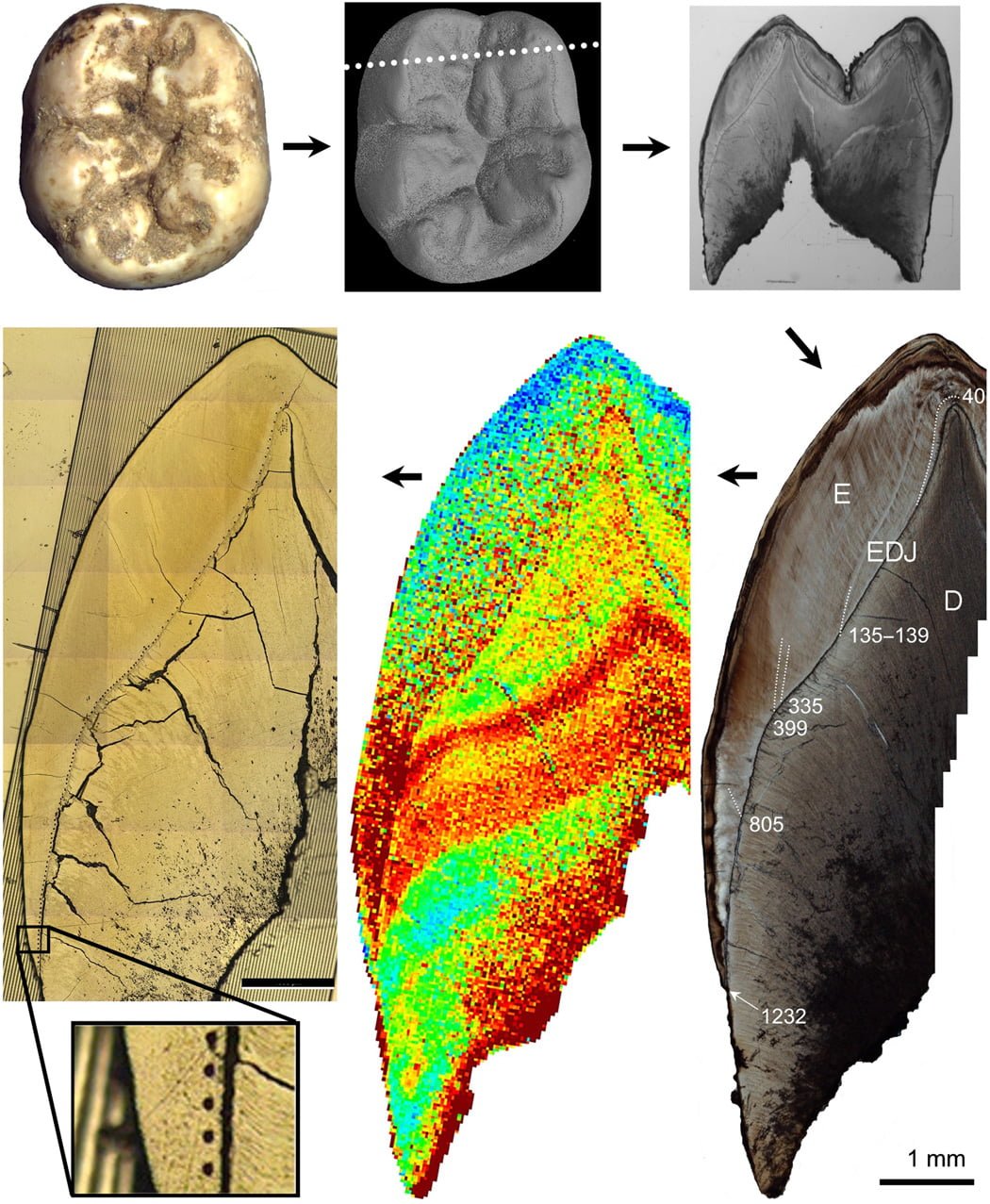Scientists studied two Neanderthal teeth they believe to be 250,000 years old, which showed lead exposure in children. The teeth show both children were exposed to lead twice during their life. These are the first known lead exposure cases in Neanderthals.
Environmental lead exposure
An international team of scientists conducted the research on the two teeth, comparing them to a tooth from a another child they believe lived 5,000 years ago. All the teeth were found at the same archaeological site in southeastern France. The results were published in the journal Science Advances.
“Traditionally, people thought lead exposure occurred in populations only after industrialization, but these results show it happened prehistorically, before lead had been widely released into the environment,” study co-author Christine Austin of the Icahn School of Medicine at Mount Sinai said in a statement. “Our team plans to analyze more teeth from our ancestors and investigate how lead exposures may have affected their health and how that may relate to how our bodies respond to lead today.”
Researchers believe the Neanderthal teeth revealed lead exposure in the environment when the children either inhaled or ingested it.
“That must have come from natural deposits in the area, whether they were going into an underground environment or they were eating contaminated food that was incorporated into their growing bones and teeth,” Smith added.
How scientists studied the Neanderthal teeth
Similar to how tree rings are used to determine the ages of trees, scientists used the Neanderthal teeth to uncover key events in the lives of Neanderthal children. During childhood, new layers of teeth are formed each day, causing chemical signatures that scientists can track.
“Teeth record environmental variation based on the climate, even where you’re growing up,” lead author Tanya Smith of Griffith University told CNN. “That’s possible because when you’re growing, your teeth you actually lock in a record of the chemistry of the water and the food that you’re eating and drinking. Because teeth have these tiny timelines, we can relate the chemistry to the growth to calculate ancient climate records. We can’t do that with any other element of the body.”
The team determined that one of the Neanderthal children was born in the spring and that both children were more likely to get sick during the cold of winter. Compared to the conditions in which the child from 5,000 years ago lived, the Neanderthal children lived through more extreme seasons with huge variations in temperature.
The Neanderthal teeth had growth rings, which scientists used to measure barium, lead exposure and oxygen. They mapped the chemistry of the teeth, which helped them determine when the summer and winter seasons happened and how long they lasted.
“This study reports a major breakthrough in the reconstruction of ancient climates, a significant factor in human evolution, as temperature and precipitation cycles influenced the landscapes and food resources our ancestors relied on,” Smith said in a statement.
Scientists say the growth rings also showed evidence of nursing.
“We were able to identify milk intake through breastfeeding in one individual based on a trace element called barium,” Smith told CNN. “We were able to time that to the season.”
According to the study, scientists believe the child was nursed for two and a half years, which is similar to the children of modern human ancestors who lived in hunter-gatherer environments.
“This is something we may share in common with Neanderthals,” Smith said.
Unfortunately, although the Neanderthal child survived infancy, it did not reach adulthood. The ages of the children were not included in the study.





